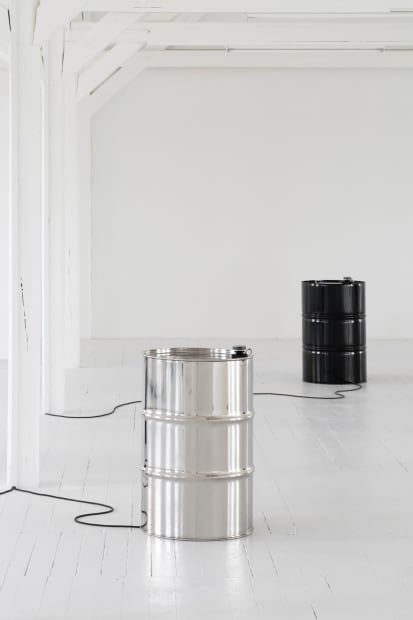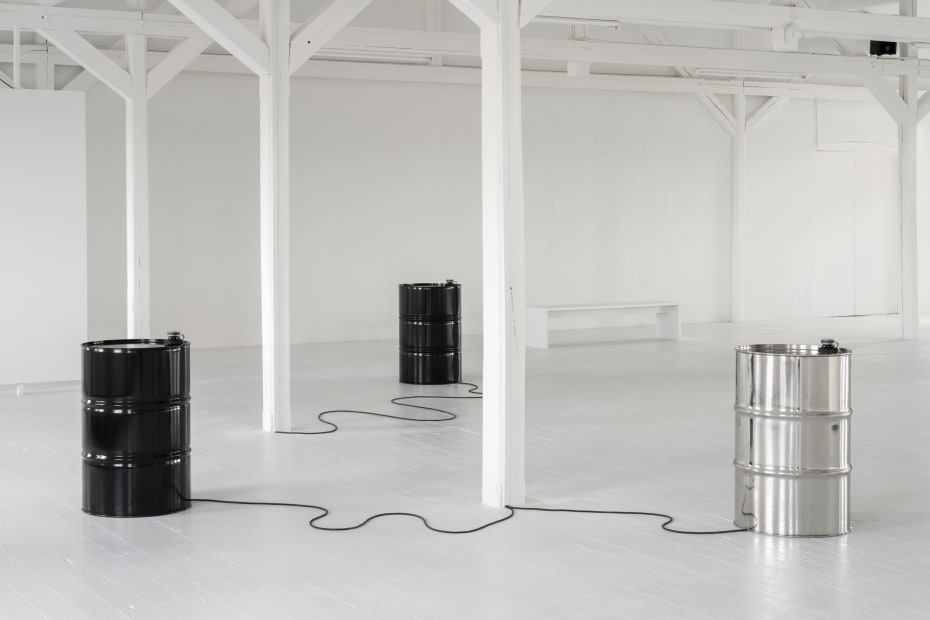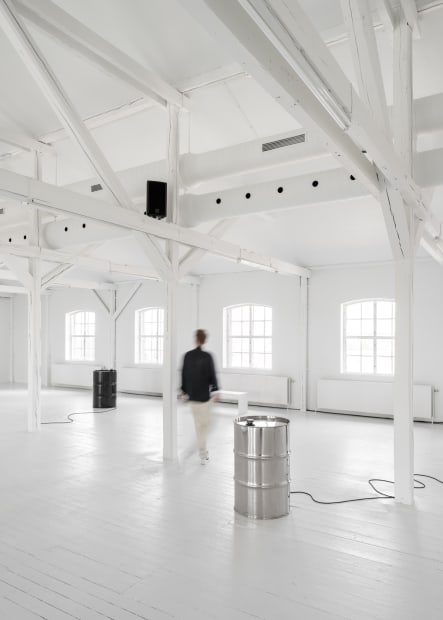Susan Philipsz: Dybderne: Kunstmuseum Brandts, Odense, Denmark
In Susan Philipsz's works, sound takes on a sculptural form. This also applies to the exhibition's two works The Depths (2023) and Muffled Drums (2020/2023), where sound is shaped in the sculptures. Here, hymns and drums emerge from the interior of the metal sculptures, where they resonate and then flow on towards the visitors experiencing the work. Depending on where we stand in the exhibition space, the sound will change. The sounds trigger a unique and individual response, and invite us to reflect on our own lives and our own encounter with the depths of darkness and the light of hope, sorrow and joy, life and death.
In the piece The Depths, we hear Philipsz's own untrained singing voice. She sings the Latin psalm verse De Profundis, which in Danish means "from the deep". The Psalm verse originates from the Book of Psalms in the Old Testament. In 1980, the composer Arvo Pärt (b. 1935) creates a 4-part choral work over the hymn, and it is the work that Philipsz sings in The Depths. In the psalm, we follow a first-person narrator who calls out from a position of powerlessness and desperation. But through the psalm, the I-narrator writes himself out of the depths of his mind to find hope in his faith. A similar movement from darkness to light runs through the voices of the choir. From deep solo parts, to brighter and brighter harmonies, to end in unison.
Susan Philipsz is often inspired by literary references. In this exhibition, Susan Philipsz references a letter written by Oscar Wilde. Wilde writes the letter at the end of his prison sentence when he was convicted because of his romantic relationship with Lord Alfred Douglas. Wilde begins his letter from the depths; from a position of powerlessness and grief after two years of hard focused labor and isolation. In the first part of the letter, Wilde rages against Douglas. But despite the great hardship that Wilde has experienced, towards the end of the letter he still manages to regain hope and courage. In this exhibition, the choral song is accompanied by muted and pulsating drums that flow from the six barrels in the work Muffled Drums. The heartbeat of the drums represents the unquenchable hope and courage that Philipsz's hymn and Wilde's letter contain. The sounds of the drum can also be reminiscent of a funeral drum announcing a person's death. A connection that the writer Henry Wadsworth Longfellow (1807-1882) puts into words in his poem A Psalm of Life from 1838:
Art is long and Time is fleeting / And our hearts, though stout and brave / Still, like muffled drums, are beating / Funeral marches to the grave.
Photo by David Stjernholm





